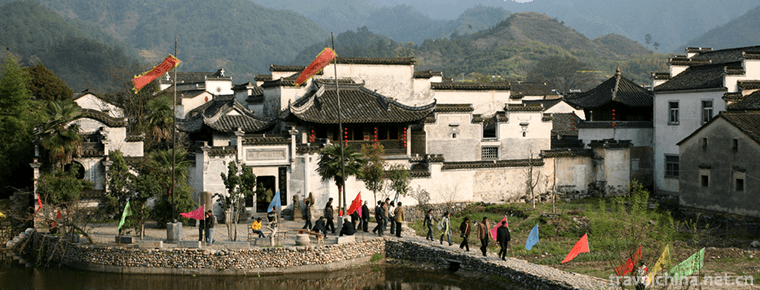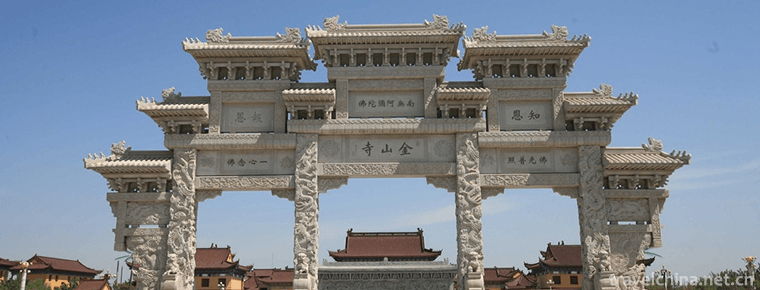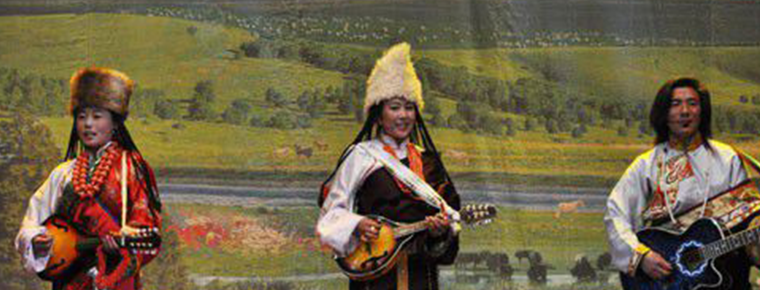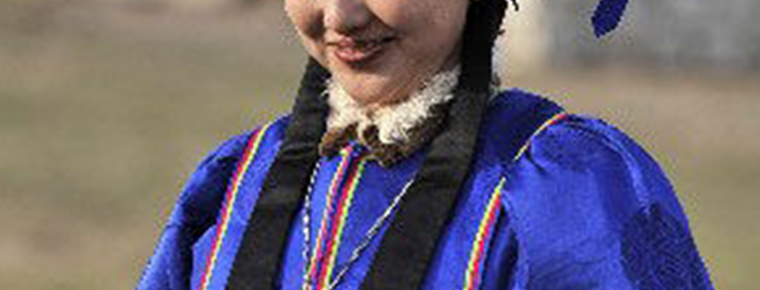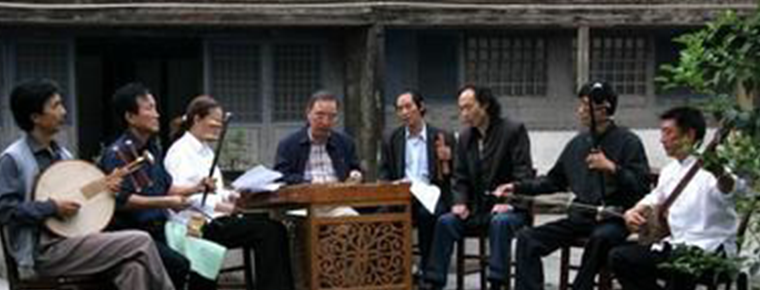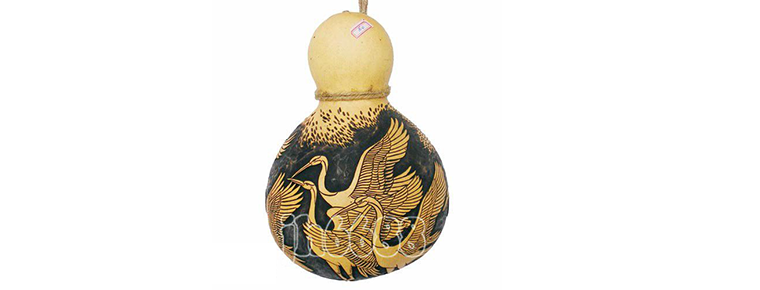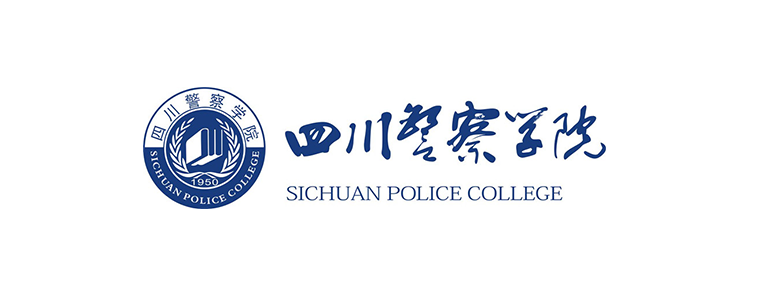Shui Shui Custom
Shui Shui Custom
"Shuishu" is a prototype written by the ancestors of the Shui nationality of the minority nationalities in Southwest China. Shui Shu custom is the formation, development and inheritance of Shui Shu, which constitutes a custom related to aquarium life.
Shui Shui Shu is known as an encyclopedia of Shui nationality. The Shui people's funerals, sacrifices, marriages, construction, travel, divination and production are all based on Shui Shu's finding out from Shui Shu, and then acting strictly according to its restrictions, thus forming an important prerequisite for Shui Shu custom culture. The custom of Shui Shu also reflects the living condition of the Shui family. According to incomplete statistics, there are seven or eight hundred kinds of ghosts and gods believed by the Shui people. The names of ghosts and gods and Shuishu entries almost cover the names of all things in the world
The inheritance of Shui Shu custom forms two major parts of Shui Shu: one is the handwritten copy compiled by the rudimentary ancient characters of Shui nationality, and the other is the oral instruction given by Mr. Shui Shu to make up for a large number of important meanings, ceremonies and congratulations that cannot be recorded due to the imperfect development of Shui Shu. There are many kinds of volumes in Shui Shu, including recitation volumes and application volumes. The application volume mainly includes dozens of kinds, such as Recitation Volume, Time Volume, 28 Suite Volume, etc. The recitation volume mainly includes more than ten kinds, such as Zheng Qi Volume and Haizi Volume.
On May 20, 2006, Shuishu custom was approved by the State Council to be included in the first batch of national intangible cultural heritage list.
The aquarium originated from the ancient Baiyue clan. The aquarium inhabited the south of the Miaoling Mountains in the southeastern Yunnan-Guizhou Plateau, the Duliujiang River and the upper reaches of the Longjiang River. With dense forests and picturesque landscapes, it is suitable for the development of agriculture and forestry and is the hometown of fish, rice, flowers and fruits in Guizhou plateau. Shui nationality is good at farming, mainly planting rice.
Shuishu is commonly known as Shuishu
Among the 56 ethnic groups, 17 have their own traditional characters. Shuishu is one of them. Shui Shu is the general name of Shui nationality's ancient writing and Shui nationality's books. It is an ancient written symbol similar to Oracle Bone Inscriptions and bronze inscriptions, which records the cultural information of ancient astronomy, folklore, ethics, philosophy, aesthetics and law of the Shui nationality. It is known as the "living fossil" of hieroglyphics and is the last undeveloped territory of hieroglyphics. Shuishu has other honorary titles: for example, the "Book of Changes" and "Encyclopedia" of the Shuijia people are important books to interpret the long, vicissitudes and bitter and astringent history of the Shuijia people.
Manifestation
Shui Shu is a unique prototype written by the ancestors of Shui nationality. Shui language calls it "Hong Sui" ("Hong" is the word, "Sui" is the word of Shui Jia, and "Hong Sui" means the word of Shui Jia or the book of Shui Jia).
It is a comprehensive record and reflection of the folk knowledge and culture of the aquarium, involving astronomy, calendar, primitive beliefs, ethics, production and life and many other aspects. It is mainly spread in the aquarium settlements in southwest China.
The character symbol system of Shuishu is unique, including a kind of Chinese character similar to Oracle Bone Inscriptions and bronze inscriptions, many hieroglyphic symbols and pictorial characters with paragraph meanings. It has a few words (only hundreds of words), unique character symbol system, text can not express meaning independently, but depends on Mr. Shui Shu, who has a teacher-inheritance relationship, that is, the "priest" who can read and use Shui Shu (all male). According to the relevant entries in Shuishu, it is meaningful to explain them in combination with oral content. Therefore, for thousands of years, Shui Shu has been handed down by generations of Shui Shu masters through oral and manual handwriting. It is a combination of ancient Shui scripts and oral and heart-to-heart cultural transmission.
Sources of Water Books
The aquarium originated from the ancient Baiyue clan system. The aquarium is located in the south of the Miaoling Mountains, the Duliujiang River and the upper reaches of the Longjiang River in the southeastern Yunnan-Guizhou Plateau. With dense forests and picturesque landscapes, it is suitable for the development of agriculture and forestry, and is the hometown of fish, rice, flowers and fruits in Guizhou plateau. Shui nationality is good at farming, mainly planting rice. Shui nationality has an ancient character "Shui Shu".
The Shui people have their own views on the source of Shui nationality characters. One of the legends is that the Shui script was created by an ancestor of the Shui nationality named Lord Lu Duo. Legend has it that he spent six years creating words. At first, the aquarium script "many boxes piled up, full of a room", and then the Emperor sent the heavens to burn the house containing the aquarium script. Luduo was afraid of being calculated by the Emperor again, so he put the words in his stomach by memory. Legend No. 2: The Shui nationality script was learned by six old people, such as Lu Duogong, from the immortals, who created Hong Sui according to various livestock, birds and appliances in the Shui nationality area. After six years of study, the six old people finally learned how to use Hong Sui and took it back to them on bamboo and cloth slices. On the way home, Hong Sui was robbed. In order to avoid being murdered again, with the help of memory, Duo Lu deliberately wrote Hong Sui with his left hand and changed his handwriting. He also wrote some characters in reverse, reversed or added or subtracted strokes, thus forming a special aquarium character.
Classification of Water Books
There are roughly three types of structure of Shuishu: one is pictographic characters, some of which are similar to Oracle Bone Inscriptions and bronze inscriptions; the other is imitation of Chinese characters, i.e. rewriting, rewriting or changing the writing of Chinese characters; and the third is religious characters, i.e. various cryptographic symbols representing the primitive religion of the Shui nationality. Write vertically from right to left without punctuation.
Shui Shui Shu can be divided into two categories: good luck and bad luck. Its catalogue can be divided into reading books, reading books, escape palm books, time picture books, orientation books, star books and so on. Reading aloud is the basic book for learning water books. Reading books are the main part of water books and the main basis for choosing auspicious days. There are more than 40 items in auspicious category, such as Daiwang, Jiugao, Jiubin and so on. There are nearly 600 items in evil category, such as prism, dove fire, flower dissipation and capital residence. Shui Shui Shu is known as an encyclopedia of Shui nationality. The Shui people's funerals, sacrifices, marriages, construction, travel, divination and production are all based on Shui Shu's finding out from Shui Shu, and then acting strictly according to its restrictions, thus forming the Shui Shu custom.
Water Book Inheritance
The character symbol system of Shuishu is unique, including a kind of Chinese character similar to Oracle Bone Inscriptions and bronze inscriptions, many hieroglyphic symbols and pictorial characters with paragraph meanings. The number of characters is small (only hundreds of words), and the system of character symbols is unique. The text can not express its meaning independently, but depends on Mr. Shui Shu, who has the relationship between teachers and inheritors.
A "priest" (all male) who can read and use water books. Only when the Shuishu text is interpreted by Mr. Shuishu according to the relevant items contained in Shuishu and combined with the oral content can it be meaningful.
Shuishu is handed down from generation to generation by Mr. Shuishu in the form of oral and manual handwriting. It is the combination of ancient Shuishu scripts and oral and heart-to-heart cultural transmission. The combination of Shui Shu and Shui Shu is an important prerequisite for inheriting the traditional culture of Shui nationality.
Shui Shu custom is the formation, development and inheritance of Shui Shu, which constitutes a custom related to aquarium life. The inheritance of Shui Shu custom forms two major parts of Shui Shu: one is the handwritten copy compiled by the rudimentary ancient characters of Shui nationality, and the other is the oral instruction given by Mr. Shui Shu to make up for a large number of important meanings, ceremonies and congratulations that cannot be recorded due to the imperfect development of Shui Shu.
There are many kinds of volumes of Shui Shu, including recitation volumes and application volumes, each of which has more than ten kinds. The Encyclopedia of the Shui Nationality is called "Wannian Jing Jing Jing" which consists of three parts, namely, upper, middle and lower, with 844 pages and a total of 3616 entries. The Wannian Jingjing of "Huang Zeng" was identified as a manuscript from 1661 to 1722 (the reign of Emperor Kangxi in Qing Dynasty). Its content involves ancient astronomical calendar, meteorology, religious beliefs, folk ethics, linguistics, philology, philosophy and so on. It is the most extensive and informative classics in the known water books. Another book, Yin, Yin and Yang, is a picture-and-text colored scroll of water calligraphy, which was written in 1875-1908 (during the reign of Guangxu in the Qing Dynasty), with philosophical content. There are 5 kinds of colors in 59 pages of the book. The characters, buildings, cattle, horses, dragons, snakes, birds and animals are vivid, vivid and skillful in color, which reflects the symbols of the ancient aquarium people's pursuit of a better life and a better culture and art. "Ruyi Divination Card" is even more excellent, which is the only deck of aquarium divination cards found in the whole country. There are dozens of cards. The cards are painted with various figures and other shapes. They are used by the Shui people to go out, do business, marry, marry and divine divination in ancient times. In addition, the four volumes of Shui Shui Shui Shu that were later cracked reveal the ancient lifestyle of the Shui people. "Calendar Volume" is a volume for the ancestors of Shui nationality to deduce good or bad and predict good or bad in funeral by using astronomical calendar knowledge; "Time Volume" is a secret book of Shui Shu, which elaborates the theory of Yin and Yang in ancient times according to the theory of five elements and the theory of astronomical movement; "Shouyin Volume" is a volume for the ancestors of Shui nationality to highly generalize the animal life habits and the reality of human life according to the theory of "all things are animated". The book "Jintang Volume" is a book for the ancestors of the Shui nationality to choose the auspicious day.
The value of water books
Shui Shui Shu is usually regarded as a witchcraft book. The age of making Shui Shu is very ancient. Some scholars speculate that the origin of Shui Shu can be traced back to the Xia Dynasty. Moreover, "there should be some marriage relationship between Shui Shu and the oracle bone inscriptions of ancient Yin people". The place where Shuishu was manufactured was "first introduced to Jiangxi from the north in the northwest, then moved to Guizhou from Jiangxi". Shui Shui Shu includes Tiangan, Dizhi, Bagua, celestial phenomena, seasonal seasons, birds, animals, fish and insects, body features, rate appellations, number and orientation, etc. This kind of writing is recorded in the local chronicles of Duyun and Sandu counties. The shape is very old, resembling oracle bone inscriptions of Shang Dynasty, and resembling ancient small seal. Early copies of hydrology were written with bamboo tips dipped in ink. Recently, copies have been written with brushes. Some are pictorial, some are inverted, oblique or reversed in regular scripts. Some ghost masters also write some secret words, known as "anti-book" and "secret word".
Shuishu records mostly the date, location, auspicious and evil signs of primitive religious beliefs and the methods of dispelling ghosts and evading evil spirits. Generally speaking, Shuishu is a tool for wizards to perform magic acts because it is suitable for the year, for the month, for the day, for the time, and for singing tricks or signs of things. Because the Shui people believe in ghosts and gods, Shui Shui Shu is widely used. This unique function of Shui Shu promoted the succession of the worship of ghosts and gods of Shui nationality from generation to generation. In addition to containing a large number of primitive religious beliefs, Shuishu also preserves the data of astronomy, calendar and ancient Chinese characters that need to be excavated and deciphered urgently. The astronomical and calendar data reflected in Shuishu is a very precious historical and cultural heritage. Some of its basic theories, such as nine stars, twenty-eight nights, eight diagrams and nine palaces, Tiangan and Dizhi, five stars of the sun and moon, five elements of yin and yang, sixty jiazi, four seasons and five directions, seven yuan calendar system, and the construction and preservation of the first month of the water calendar, are the crystallization of the wisdom and art of the ancestors of the Shui nationality.
The main carriers of the ancient Shui characters are oral transmission, paper handwriting, embroidery, stele inscription, woodcarving, ceramic calcination, etc. Because of its mysterious writing structure and special use, Shui Shu is hard to grow, survive and spread in this remote place by hand and oral transmission. Because its structure is mostly pictographic, mainly written and described by flowers, birds, insects, fish and other natural things as well as totems such as dragons, it still retains the information of ancient civilization and is still widely used in Shui nationality areas.
Ancient Shui characters have a sacred and lofty position in the Shui society. For Shui Shui Shui, even a piece of scrap of paper, people can not cross it; there are a series of specific rituals to study Shui Shui Shui; when building houses and other important things are used in Shui Shui Shu, the first thing to do is to hold a ceremony to invite the creation of Shui Shui Shui ancient script "Luduo Gong" to be present. It can be said that aquarium society attaches great importance to Shui Shu and regards Shui Shu characters as sacred concepts, which are deeply rooted. Shuishu, a literary system with only hundreds of words, has become the spiritual pillar of a nation, supporting its literary history and civilization history. The unique charm of Shui Shu lies in: firstly, Shui Shu is the inherent culture of Shui nationality. Shui Shu has its own unique writing system, which is an inseparable part of ancient Chinese culture. Although this writing system seems very "immature" and fragile, it can spread through time and space, and it is very mysterious. The amount of information stored in Shuishu books has far exceeded the scope of aquarium society. Some information contained in Shuishu books can help to unravel the connotation of ancient culture in the Central Plains. In addition, among the 56 nationalities in the country, about one third of them have their own language and traditional writing, and Aquarium accounts for one of them, which is worth studying. Moreover, Shui Shu is an important integration of Shui nationality's belief culture and a precious classic for studying Shui nationality's religious belief, astronomy and calendar, philosophy, literature and art, production and life, etc.
- Water Books Secret Disclosure
Legend has it that Shui Shu was created by a man named Lu Duo Gong. In Shuidong Village, Shuiyan Township, Dushan County, Guizhou Province, the local aquarium and Buyi people sing an ancient folk song in Buyi and Shuiyan, which is translated into Chinese as follows: "There is an old man named Lu Duo, who lives in caves all the year round." Writing on the bluestone slab is good or bad. All good days are given away until you build your own house. There were no good days in the book, so I had to live in a cave. If you ask where the deep cave is, it's in Shuiyan and Shuidong. A Brief History of the Aquarium published in 1986 said that there were more than 400 words in it, and a Study of Chinese Aquarium Culture said that there were more than 500 words in it. In more than 2000 volumes of water books consulted by experts, it was found that the variants mainly concentrated on 12 local branches, spring, summer, autumn and winter, Tiangan, Jiuxing and other words. For example, more than 30 variants of Yin and Mao have been found respectively. In addition to words and variants, there are paragraph-like pictorial characters, which break the original view that there are only 400 ancient Shui characters. Shuishu, oracle bone inscriptions and bronze inscriptions are affiliated with each other and recognized by the academic circles. Wang Yirong, the father of oracle bone inscriptions, discovered oracle bone inscriptions only in 1899. Two hydrological tablets have been found in the Ming Dynasty in the Shui nationality area, and the Shui Shu woodcut from 1488 to 1505 (Hongzhi period of the Ming Dynasty) has been found. From this we can see that it is not the discovery of oracle bone inscriptions before the publication of Shui Shu, but as early as the Yin and Shang Dynasties there were Shui ancient characters. Later, due to the emergence of two epoch-making national migration activities, the language and culture of the aquarium were differentiated from the same origin, and then gradually absorbed and merged. Twenty-four symbols on pottery tablets of the Xia Dynasty, which have puzzled the archaeological circles for many years, were provided to Guizhou Archives Bureau by relevant units in Henan Province after they saw the report of Shui Shu. As a result, more than ten corresponding symbols were found. The ancient characters of Shui nationality and the cultural relics of Xia Dynasty inherit in one continuous line. It can be seen from this that in Xia and Shang Dynasty, the ancestors of Shui nationality were included in the ethnic groups of China. The mystery of Shui Shu also lies in its "ancient" and "anti". Shuishu is called "Hong Sui" in Shuihua. "Hong" originated from ancient Chinese characters and is a relic of the mother tongue; "Sui" is the self-pronunciation of the Shui nationality and the brand of the Suishui River basin. In Tang Dynasty, Fushui Prefecture was set up to appease the human group who claimed that "Sui" was the main object, and from then on "Shui" was replaced by "Sui". This is the beginning of the central dynasty's recognition of the aquarium, and also the historical witness of the evolution of the aquarium into a single nation. Shuishu is also known as "anti-book", not a Book of rebellion. The "anti" of Shui Shu is manifested in several aspects: Firstly, the structure of some hydrological characters is contrary to that of the local Chinese characters, such as "Zi, Ugly, noon, Ninth and Five". Its word-formation can be reversed, side-written, reversed, and even many patterns are reversed positive. Secondly, the concept of Shui Shu is contrary, and there is a strong sense of divinity. Because the original intention of the creation of Shui Shu is to communicate with ghosts and gods, to explore mysteries, to deal with ghosts and gods, to talk with ghosts and gods, etc., so the symbols of divinity in Shui Shu classics are mixed with them. Thirdly, the month of Shuishu is out of place with the calendar order of Han nationality. For example, the end of December in the water calendar and the first month of the New Year correspond to August and September in the summer calendar. Fourth, it is the reflection of the aquarium's rebellious mentality. From the history of forced migration of Shui people's ancestors, especially from Baiyue, where Qin conquered and exterminated, Shui Shu's unique anti-writing came from the strong anti-psychology of Shui people, which was formed by long-term discrimination under the cruel rule of feudal dynasties.

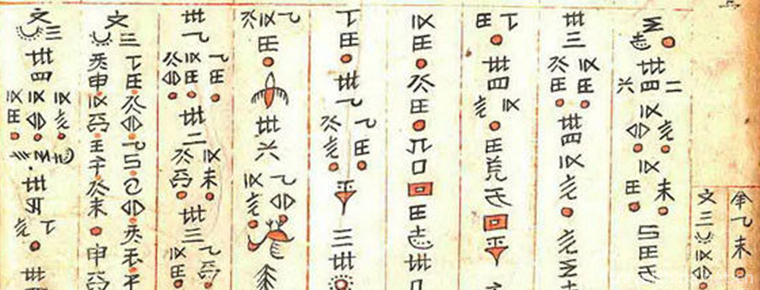
-
Jixi Longchuan Scenic Area
Jixi Longchuan Scenic Area in Xuancheng City, Anhui Province, is a national AAAAA-level Tourism Scenic Area officially approved by the State Tourism Administration.
Views: 142 Time 2018-12-08 -
Island Jinshan Temple
Jinshan Temple, located in the northern part of Qingyun County, Dezhou City, Shandong Province, was built in the Sui Dynasty and flourished in the Tang Dynasty. It is said that the island Jinshan Temp.
Views: 109 Time 2019-01-13 -
The tru Valley
Turugou is located in Liancheng Forest, Yongdeng County, 160 kilometers northwest of Lanzhou City. It belongs to the eastern foot of Qilian Mountains..
Views: 198 Time 2019-02-22 -
Zamuni of Tibetan Nationality Playing and Singing
"Zamuni" is also called the Six Stringed Orchestra, a traditional Tibetan plucked instrument. Mainly spread in Lhasa, Shannan, Ali, Lazi (Bahir), Sakya, Angren, Dingri and other places.
Views: 116 Time 2019-04-15 -
Ewenki costumes
The Ewenki people belong to the Tungusic race, and their clothing materials are mainly animal skins, as do the Tungusic people such as Manchuria and Xibo..
Views: 265 Time 2019-04-28 -
Enshi dulcimer
Enshi Yangqin, also known as Enshi Silk String, was made up of Hunan Opera, Southern Opera, Chu Tune, folk minor, instrumental music licensing scholars and .
Views: 110 Time 2019-04-28 -
Gourd sculpture
There are two techniques for carving gourds. One is to use three kinds of special steel needles, large, medium and small, to carve the landscape, flowers and characters in the gourd.
Views: 386 Time 2019-05-03 -
Li Nationalitys Wood Drilling and Fire making Techniques
Li people's wood-drilling and fire-making skills, Hainan Province's local traditional handicraft, one of the national intangible cultural heritage..
Views: 176 Time 2019-05-13 -
Shangdang Erhuang
Pihuangqiang in Shangdang area is called Shangdang Erhuang. It is an independent opera with a history of more than 200 years. Locals call it "Tu Erhuang". At present, Shangdang Erhuang is on.
Views: 178 Time 2019-06-13 -
Sichuan Police College
Sichuan Police College is the only full-time undergraduate college of political, legal and public security in Sichuan Province, which is sponsored by the People's Government of Sichuan Province and jo.
Views: 118 Time 2019-08-31 -
Diexi earthquake site
Diexi earthquake site is located 2.5 km southeast of Jiaochang Township, Maoxian County, on the second grade platform on the East Bank of Minjiang River.
Views: 356 Time 2020-11-07 -
Hydrology in Yibin
The water system in Yibin belongs to the external water system, with the Yangtze River as the main vein, with many rivers, high density and abundant water. Jinsha River and Minjiang River join to form the Yangtze River, which runs through the nor.
Views: 323 Time 2020-12-18
